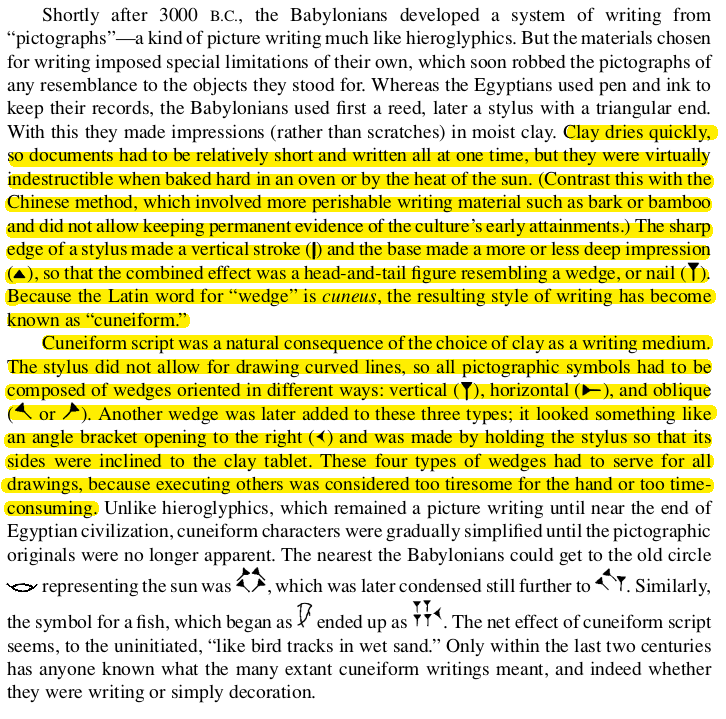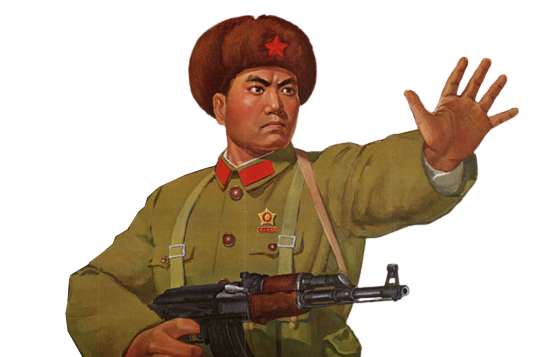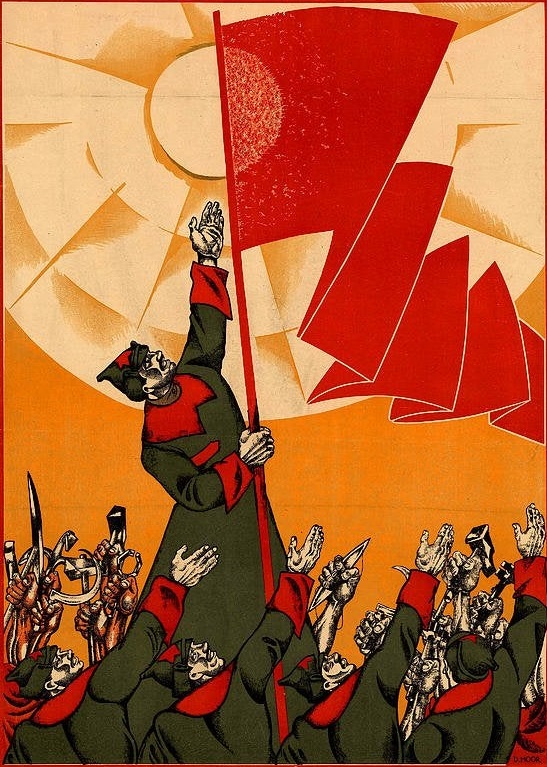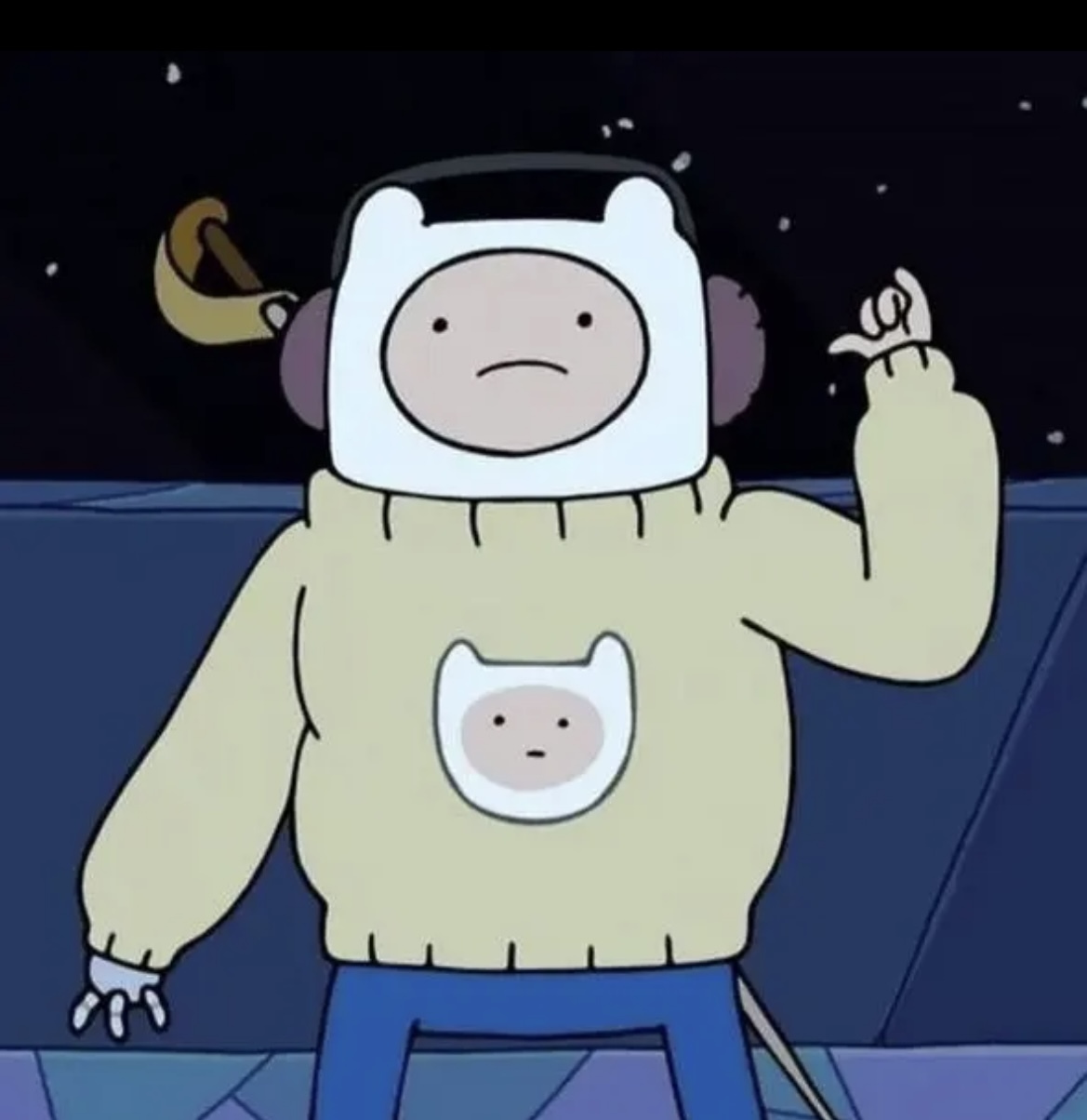From a thread asking opinions about emoji usage.
However it happens and whomever is responsible here we are... and we're losing ground fast. And things like emojis are leading the charge.
Should we tell them @WhyEssEff@hexbear.net is responsible?
Link: https://hexbear.net/comment/4277133
Honestly fuck everything about that comment but especially fuck how this person seems to think that Egyptian hieroglyphics were in any conceivable way a "primitive" writing system, as opposed to a writing system so multifaceted and complicated it took the literal Rosetta Stone as well as the comparative method with Coptic and Proto-Afro-Asiatic to decipher it and understand its inner workings.
For that matter fuck that this person thinks that cave paintings are a "primitive" art form. It's like, oh wow imagine using the bumps in cave walls to create depth and the flicker of torchlight to create the illusion of animation. Imagine painstakingly manufacturing the paint used. Imagine coordinating a community effort to help document and illustrate its own oral history using iconography that we can only theorize about. Couldn't be me!
If anything, the problem with hieroglyphics is they weren't simple enough. They were designed to be used by a priestly class and nobody else. Then even that priestly class thought it was too annoying to draw a whole ass picture for a syllable or a number and they invented hieratic cursive to greatly simplify the writing process.
Then Cuneiform was like "Hey, waht if we took simple arrangements of dashes and triangles and made them in to a completely illegible cluttered mess?
Saw an older biker looking guy with some viking tattoos and I was trying to sus out if he was fashy, then saw the cuneiform tattoo and was like "Oh, he's just a history dork we're cool". He had some pagan stuff on, too, but it was a mixture of older new-agey stuff that you don't really see on the fashy neo-thoraboos.
Then Cuneiform was like "Hey, waht if we took simple arrangements of dashes and triangles and made them in to a completely illegible cluttered mess?
 Sumerian cuneiform might slightly predate predate hieroglyphics, and is ugly because of the limitations of the medium. Digging out the book I have about this:Show
Sumerian cuneiform might slightly predate predate hieroglyphics, and is ugly because of the limitations of the medium. Digging out the book I have about this:Show
David Burton - The History of Mathematics An Introduction (2005)
Cuneiform was literally also just pictures at first, and then evolved to more abstract shapes dictated by the use of clay tablet as medium, pushing wedges is way easier than drawing on it, and good scribe could do that surprisingly fast.
Show
And if you think about it: writing above word "head" in cuneiform is 7 moves of the hand. Writing "head" in english is also 7 moves. Writing the same word "głowa" in polish is 9 moves.
here you have video showing few things and tricks about cuneiform
頭 was 16 strokes until simplification turned it into 头 (5 strokes)
Show
That cuneiform progression is just the do Iook like I know what a jpeg is meme
The cuneiform script changed considerably over more than 2000 years
This is so mind-blowing to think about
I found a YouTube link in your comment. Here are links to the same video on alternative frontends that protect your privacy:
I love these dorks that say something vibes-based and subjective that they made up and act like it's the most scientific fact in the world.
Humans communicate through multiple ways, Mostly through body language. When one fails to accurately describe what we want to communicate we use the other. This is normal and I would be more concerned if we only used one form of communication.
It's just more supremacy bullshit. There always has to be something dominating to these people.
Cultural degeneration theory, huh. Wonder where that worldview leads
If you look at the history of aesthetics, you will notice that people in nearly all cultures for the most of history, literally except west and westernized ones (and even that just in the last 300 years), simply loved garish colours. Only thing standing between people and having everything in garish colours was poverty.
Bulldozing the black neighborhood to put in a Whole Foods and painting tacky “neighborhood” murals on the walls to create the illusion of culture
Phonetic Writing and its consequences have been a disaster for man kind. The Barbarians of the west were never meant to read and write. The Caucasoid brainpan simply can not comprehend logography. Innumerable horrors have been meted upon mankind as a result of their acquisition of the pen. /s
I don't think english can be even called "phonetic" at this point.
it's worse than that it's all spelt according to the rules of the language we nicked it from. A greek word follows greek rules. As long as the grammer remains Germanic, English is capable of absorbing any word. Some day we will meet aliens and absorb their words into English
Logographic writing is an elitist construct, and the result of literacy being restricted to only those with relative wealth and connections.
Phonetic writing is a tool of proletarian liberation.
Phonetic writing is a way for the bourgeois class to keep the proles from communicating to each other while they (the ruling class) speak to each other using some foreign or dead prestige language that takes much more effort to learn than logographic writing. The average French of Spanish worker has a limited ability to communicate to eachother despite the fact that their languages are so similar that they could be considered dialects, while their ruling class can easily communicate each other via Greek or Latin or English, both of which are much harder to learn than a theoretical logographic romance language orthography (especially considering English is already partially logographic).
The idea that pre-industrial literacy rate in China was lower than Europe's is some bazinga brain bullshit. In 1860 the Literacy rate for Spain was 41.7% and 11.9% for Men and Women respectively[0], "Education and popular literacy in Ching China" puts the Qing Dynasty's literacy rate in the same period as "30~45%" for men and "2~10%" for women. It's hard to find exact statistics for Pre-Qing dynasty literacy rates, but it's generally accepted that literacy was much higher in the previous Ming Dynasty. Corroboratory Evidence is that Ming Dynasty was known for mass producing manuals on farming and construction whose audience would necessarily consists of the lower classes. I can't find a western equivalent to for example 天工開物 (1637 manual on farming and industry distributed by the Ming Dynasty), or 營造法式(1103 manual on construction distributed by the Song Dynasty). This ties into the unfounded belief amongst westerners that somehow Chinese couldn't be printed, when widespread use of printing in China predates that of the west by several centuries. Literacy in China was low before the revolution because it was an unindustrialized society, not because logography is somehow hard to learn.
- https://www.econstor.eu/bitstream/10419/247103/1/ehes-wp173.pdf
How does that compare to Korea in the same time frame, though? Because both of the known times that an alphabet emerged from a logographic system it was a move to increase accessibility and enable more widespread literacy, and apparently even China considered a phonetic script as an option for attaining full literacy post-revolution only to decide against it and go with simplifying their logographic script instead.
The big thing that stands out, though, is that modern "phonetic" scripts have locked into irregularity and have started taking on some of the qualities of a logographic script as a result, and that the standard for what constitutes "literacy" varies wildly on context so while pure phonetic scripts may be the most accessible in allowing anyone to start being able to sound out words well enough to comprehend written language with minimal training, what actually constitutes full literacy in a language is massively more involved than that and may not actually differ significantly between modern "phonetic" scripts and logographic ones since both entail years of education and heavy practical use.
Or to put it another way, in English a small child can "read" and "write" phonetically with only a few weeks or months of training, but won't be literate for another 10-15 years.
I would say the transition from Cuneiform to the Aramaic script lead to a sharp decrease in literacy in Mesopotamia. Likewise I don't think Classical era Coptic speakers had a higher literacy rate than Ancient Egyptians. /semi serious
I would say that most transitions from logographic script to phonetic script result from a logographic writing culture being invaded by a phonetic writing culture, and usually ends with the logographic writing culture dying out completely (like the above). Likewise, The first attempt to create a phonetic script for Chinese was during the Mongol led Yuan Dynasty, which created the Phag-Pa script. All attempts to write Chinese phonetically are basically illegible and require you to write in a style that makes you sound like a lobotomite. You have to massively restrict your vocabulary and also essentially stop using any grammatical contractions.
Anecdotally iirc the PRC reformed the Yi language from a logographic script to a syllabary in one autonomous region while in another it remained as it was. The Yi script is a logographic script that is completely seperate from Chinese. IIRC literacy rates are like 2x higher in the region that didn't do the phonetic reform.
Hangul wasn't really used for most of its history, and only became widespread in like the 1890s. Past that Koreans seemed to have used a mixed orthography of Hangul and Chinese characters (kind of like how Japanese uses Kanji and Kana but less extreme because the korean system only used Chinese characters for Chinese origin words) until like 2 generations ago. I have a magazine published in like the 90s that still used this mixed orthography.
Also this random source I have puts overall Korean literacy in 1945 at 22%[1], which is on par with the previous mentioned Spanish and Qing literacy rates, despite this being like 50 years after the Gabo reforms (1896) when " the Hangul Korean alphabet was adopted in official documents for the first time in 1894.[26] Elementary school texts began using the Korean alphabet in 1895"[2]
- https://sites.miis.edu/southkoreaeducation/diversity-and-access/
- https://en.m.wikipedia.org/wiki/Hangul
That's fascinating. I wonder if there's been any solid work done on like average hours of education required to reach such and such a level of proficiency with different sorts of scripts, because I've always seen phonetic scripts portrayed as the vulgar and accessible ones while logographic systems are elite and require considerable training.
I do know that dyslexia basically only exists for phonetic writing.
https://journals.plos.org/plosone/article?id=10.1371/journal.pone.0282200
This study claims that German children with dyslexia when being taught Chinese characters performed as well as non-dyslexic German children.
I straight up can't find one about comparative hours learned, but I do remember seeing someone claim Spain spends less time teaching Spanish than the US does English and China Chinese. But also I assume for Spanish any writing before the renaissance is in Latin and most technical writing in English (I remember being really disappointed that the Cybersyn documentation was all in English), English has the challenge of teaching Germanic speaking children a bunch of Greek and Latin loanwords not used in daily life if they want full technicll literacy, and the Chinese education system will teach 8th century poetry to 8 year olds and 13th century poems to actual babies.
In my experience if you ever press anyone who claims logographic writing takes longer for evidence they'll just throw their arms up and go "but there's so many characters" and never produce any actual evidence.
Also now that you mention it, historically phonetic scripts have been limited to the elite in China. Phag-Pa script was basically only used by high level government officials. Manchu was something only the Manchu nobility used. Buddhists transmit their writing primarily in Chinese, with only the elite monks learning Sanskrit (which is highly phonetically regular). Chinese Muslims historically developed their own method of Islamic education that involved learning both Arabic for the Quran and Chinese to read the Chinese classics. Even BoPoMoFo was originally something that was only intended to be used by linguists. If any of these scripts were actually that much easier to use than Chinese, it surely would've spread to the lower classes.
The closest you get are the Dungan, who speak a language that's like 60% Chinese 40% Arabic loanwords, who used the Arabic script. Ironically Western linguists consider Dungan a dialect even though it's pretty much the only clear cut case of a seperate language compared to Chinese dialects they consider to be languages.
The Chinese have done well with making logographic writing accessible to the masses
While true, it's taken a tremendous amount of effort, and from what I can find, it still takes more schooling to reach the same relative level of literacy.
The Koreans had it right in switching over.
The same relative level of literacy for knowing how to read Chinese for English would be being able to read Dutch and Flemish as well as Old English and Germanic Runes. The Chinese education system lasts exactly as long as that of any other country. Anecdotally the highest level of schooling I achieved with Chinese is gradeschool level and I can read the previously mentioned 12th century construction manuals. I don't think an English speaker with only a grade school level of education could read even modern construction codes without a lot of trouble.
Koreans literally still have to teach their kids some amount of Chinese characters. Their ID cards has their names written with Chinese characters, scientific publications have to use Chinese characters for disambiguation. Even Korean Wikipedia has to use Chinese characters for disambiguation.[1] North and South Korea has been seperated for maybe 2-3 generations and they already have significant spelling differences due to dialectical differences. Also despite being a relatively young writing system, Hangul is already partially non-phonetic[2]. Perfectly phonetic writing does not exist. You have to force everyone to memorize one particular dialect's pronunciations, and by the time you've done that it will have already drifted away so that the orthography is non-phonetic. It's a never ending treadmill that effectively limits the ability to read primary historical documents to the elite while not actually making writing that much more accessible.
- https://ko.wikipedia.org/wiki/%EC%88%98%EB%8F%84_(%EB%8F%99%EC%9D%8C%EC%9D%B4%EC%9D%98)
- https://en.wikipedia.org/wiki/New_Korean_Orthography
Pro posting tip in case he's reading this: if you're gonna pretend not to care, don't come back six days after a post and reply about how much you don't care.
China actually annexed these countries but
forgot to tell anyonehas a no first nuclear strike policy
waxes lyrical about the degradation of language, blissfully unaware that olds have been doing exactly that since the invention of the written word
doesn't know how to use whom or a semicolon
least stupid prescriptivist
Death to America
yeah everyone knows that since the advancement of language, there has never been a use for photos or illustrations
Chuck Wendig is proof that access to a thesaurus is not a human right. Tangential, but as a word “cromulent” has been forever tarnished by him.
Whines about language degenerating.
Can't even use whom right.
Written English isn't really a phonetic language. It's a logographic script utilizing 26 radicals to make characters. While these radicals give clues to pronunciation, English learners largely have to memorize the pronunciation of each character.

Meanwhile, in Japanese:
A: "An owl is a bird on a tree, how shall we write it?"
B: "How about a bird 鳥 standing on a tree 木?"
A: "Splendid, 梟 it is"
Technically, that was a Chinese thing and then Japanese copied it.
Meanwhile, sometime before Unicode 9:
A: “梟 is cool but I’ll forget what it means. How else could we write it?”
B: “How about 🦉?”
A: “Splendid, get to work, font makers!”
Huh yeah, you're right. I thought 梟 was a Japanese origin Kanji but it's just a bit archaic in modern day Chinese use.























